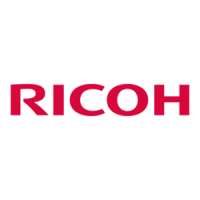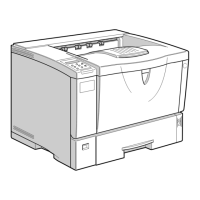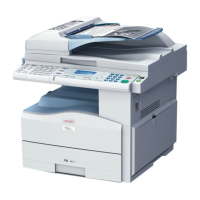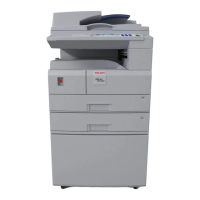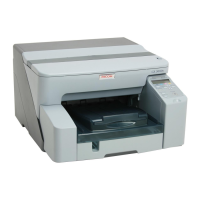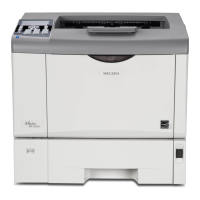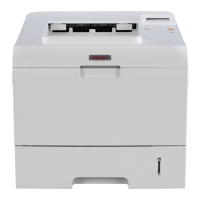G144
Ricoh Europe B.V.
Technical Training Centre
w
w
w
.
g
e
t
-
u
-
w
i
c
e
.
c
o
m
48
Slide 48
Circuitry
DC fan/solenoid driving
Two solenoids are driven by signals from the CPU (by-pass
and paper pick-up).
Motor drive
Software controls the acceleration, constant speed and
deceleration.
Transfer
PWM (Pulse Width Modulation) controls the charging
voltage, developing voltage and the transfer voltage.
Fusing
The resistance value of the thermistor detects the
temperature of the heat roller's surface
LSU
The laser diode turns on and the polygon motor is enabled
when it gets a print signal
5. Engine
More on Circuitry
Drive
The motor drives the paper feed unit, developing unit, fusing unit and exit
assembly.
Transfer
The output voltage changes according to the PWM duty cycle.
Environment recognition detects the transfer voltage used when the paper
passes the transfer roller.
Fusing
The A/D converter measures the thermistor resistance and lets the CPU
determine the temperature of the heat roller.
The AC power is controlled by comparing the target temperature to the value
from the thermistor.
An error shows if the value from the thermistor is out of the controlling range
during the fusing process.
LSU
The LSU consists laser diode and the polygon motor control.
The laser diode turns on and the polygon motor is enabled when the printing
signal occurs.
Hsync occurs when the light sensor detects the beam, and LReady occurs
when the polygon motor speed becomes a normal.
The LSU is ready if these two conditions are satisfied.

